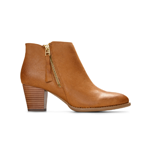
How to Prevent Gout

Arthritis affects nearly 23% of the U.S. adult population, and gout is one of the most prevalent and painful types.¹ The condition occurs due to a high uric acid level in the bloodstream (also known as hyperuricemia), causing severe inflammation, typically in the lower extremities.
With excess uric acid in the body, urate crystals can form in the joints. Gout occurs most often in the big toe, though it can also affect the ankles and other joints in the feet. The sharp crystals inflame the joint, which may result in sudden pain, swelling, redness, or a hot sensation.² This is what’s known as a gout attack.
What does gout feel like? Acute attacks can be alarming, severely painful, and potentially debilitating. Gout pain usually peaks after about 24 hours and resolves on its own over the course of roughly two weeks—and people don’t normally have gout symptoms in between gouty attacks.³ That said, if you’ve experienced gout or are at risk for developing it, prevention is crucial. Read on for tips and guidance on how to prevent gout along with some of the best comfortable sandals and other footwear Vionic has to offer!
How to Prevent Gout Attacks in the Feet
For some individuals, a gout flare-up may occur frequently. But for others, attacks might happen as seldom as every couple of years. Since you can’t always predict when a future gout attack will strike, the best course of action is to prevent any future gout attack in your feet. If you’re wondering how to prevent gout, Vionic has you covered.
It’s always best to check with your healthcare provider before attempting any at-home remedies. However, a few healthy lifestyle changes are believed to help keep gout attacks at bay, including staying hydrated, eating a nutritious diet, limiting alcohol consumption, staying active, and taking gout medications.⁴ Here’s what you should know about each approach.
Stay Hydrated
Staying hydrated is an essential part of healthy living for everyone, but it’s particularly critical for those at risk for a gout attack. Drinking lots of water helps flush out the buildup of uric acid while also helping to prevent complications, like kidney stones.
How much water should you drink every day? A good rule of thumb is to divide your weight in pounds by two, then drink that number of ounces of water. For instance, if you weigh 150 pounds, you’d aim to drink 75 ounces of water daily.
Also, while it’s OK to sip tea and enjoy a cup of coffee, most of the liquids you drink should be water. In fact, fruit juice and other fructose-sweetened drinks may actually make the issue worse by increasing uric acid levels in the body.
Eat a Nutritious Diet
Some foods contain high levels of purines, the crystalline compounds responsible for creating uric acid. When it comes to gout prevention, it’s best to avoid red meat, organ meats (such as liver), shellfish, seafood, beer, fructose (fruit sugar), foods containing yeast, and simple carbohydrates, like white bread, cake, and other sweets.
The good news, though, is that eating a nutritious diet may actually help prevent uric acid crystals from forming by lowering urate blood levels.⁵ A gout diet might include fresh fruit, vegetables, whole grains, nuts, legumes, eggs, low-fat dairy products, and plant-based oils, like olive, coconut, and flax.
Limit Alcohol Consumption
As we mentioned, beer should be avoided if you’ve experienced gouty arthritis, as yeast is known to be high in uric acid-causing purines. And alcohol consumption, in general, has been shown to trigger recurrent attacks, potentially because drinking alcohol prevents the body from processing uric acid through the liver.⁶
Stay Active
Like drinking plenty of water and eating a nutritious diet, staying active is a vital component of a healthy lifestyle. Since obesity is a risk factor for gout and other types of inflammatory arthritis, regular exercise is often recommended for weight loss or maintaining a healthy weight.⁷ And conversely, a sedentary lifestyle may increase your risk for a flare-up.
Ask Your Doctor About Gout Medication
Untreated gout is more likely to occur frequently. It can also result in more severe pain and heighten a person’s risk of complications and permanent joint damage. Those who’ve experienced an acute gout attack are unlikely to forget it. And since it’s impossible to say if or when it’ll happen again, preventative medications are often a first line of defense.
Uric acid-lowering medicines, such as allopurinol and febuxostat, can be effective in keeping recurrent gout at bay. If you’ve experienced gout, ask your doctor about including medication in your prevention plan.
See our blog, When to See a Podiatrist, for more insight into knowing when to consult with a medical professional.
Wear Supportive Shoes
In addition to lifestyle changes and urate-lowering medications, wearing supportive footwear may help prevent gout—or at least minimize some of the uncomfortable symptoms.
Orthotic shoes, such as the podiatrist-designed styles from Vionic, provide ankle stability and adequate arch support while improving alignment issues and reducing strain on the toes, ankles, and knees. On the other hand, unsupportive footwear that lacks cushioning, stability, and motion control may actually make gout worse.⁸

Know the Risk Factors
Understanding a medical condition is often key to preventing it. With that said, knowing the risk factors of gout may also help you avoid an acute attack.
Risk factors for inflammatory gouty arthritis include:
- Chronic dehydration
- Metabolism disorders
- High blood pressure
- Diabetes
- Kidney disease
- Thyroid problems
- Obesity
- Sleep apnea
- A family history of gout or other forms of arthritis
Additionally, middle-aged men and postmenopausal women are more likely to suffer an acute gout attack than the general population, along with heavy alcohol drinkers and those who take diuretic medications.⁹
Treating an Attack at Home
In some cases, an acute gout attack is an emergency. If you have a fever as well as severe pain and swelling, seek immediate medical care, as it could signal a serious infection. Having said that, there are some things you can do to treat a gout episode at home.
At-home therapies for gout in the feet include:
- Icing the inflamed joint
- Elevating the foot
- Drinking lots of water
- Over-the-counter NSAIDs (non-steroidal anti-inflammatory drugs), such as ibuprofen or aspirin
In the days and weeks following a gout attack, wearing closed-toe shoes may seem intolerable, especially if it’s your big toe that’s inflamed. We recommend getting a pair of comfortable sandals, like the supportive orthotic styles from Vionic.
Orthotic Footwear for Arthritis from Vionic
Inflammatory arthritis symptoms in feet can come and go, and in between flare-ups, the condition might be out of sight out of mind. However, you might be able to prevent it from occurring again or at least keep the discomfort at a minimum with various lifestyle changes.
One easy switch is wearing orthotic shoes. If you’re at risk for gout or suffer from another type of arthritis in your hips, knees, ankles, or feet, we encourage you to check out the supportive footwear from Vionic.
Each pair features our proprietary Vio-Motion Support technology, offering arch support, motion control, alignment, and all-day comfort. We carry myriad styles for men and women, including everything from sandals and sneakers to slippers and boots. Not only that, but many of our designs hold the APMA (American Podiatric Medical Association) Seal of Acceptance.
Browse our selection today!
Wondering if walking is good for arthritis in the feet? Our experts at Vionic have you covered. Visit today!
External sources:
- “Arthritis-Related Statistics”.CDC. https://www.cdc.gov/arthritis/data_statistics/arthritis-related-stats.htm
- “Gout”.Mayo Clinic. March 06, 2021, https://www.mayoclinic.org/diseases-conditions/gout/symptoms-causes/syc-20372897
- “Symptoms and Diagnosis of Gout”. Johns Hopkins Arthritis Center. https://www.hopkinsarthritis.org/arthritis-info/gout/clinical-presentation-of-gout/
- “Gout”.CDC. https://www.cdc.gov/arthritis/basics/gout.html
- Ryan Raman.”Best Diet for Gout: What to Eat, What to Avoid”. Healthline. September 26, 2017, https://www.healthline.com/nutrition/best-diet-for-gout
- Zhang, Yuqing et al. “Alcohol consumption as a trigger of recurrent gout attacks.” The American journal of medicine vol. 119,9 (2006): 800.e13-8. doi:10.1016/j.amjmed.2006.01.020 https://pubmed.ncbi.nlm.nih.gov/16945617/
- Jasvinder Singh. “How to Prevent the Next Gout Attack”..Arthritis health. Updated August 01, 2021, https://www.arthritis-health.com/blog/how-prevent-next-gout-attack
- “Poor footwear linked to foot impairment and disability in gout patients”. EurekAlert. https://www.eurekalert.org/news-releases/503689
- Theodore R. Fields. “Gout: Risk Factors, Diagnosis and Treatment”. Hospital for Special Surgery. Updated on May 18, 2021, https://www.hss.edu/conditions_gout-risk-factors-diagnosis-treatment.asp
- “Managing a Gout Flare”. Arthritis Foundation. https://www.arthritis.org/diseases/more-about/managing-a-gout-attack
- “How to prevent gout attacks”. Harvard Health. July 1, 2013, https://www.health.harvard.edu/pain/how-to-prevent-gout-attacks











